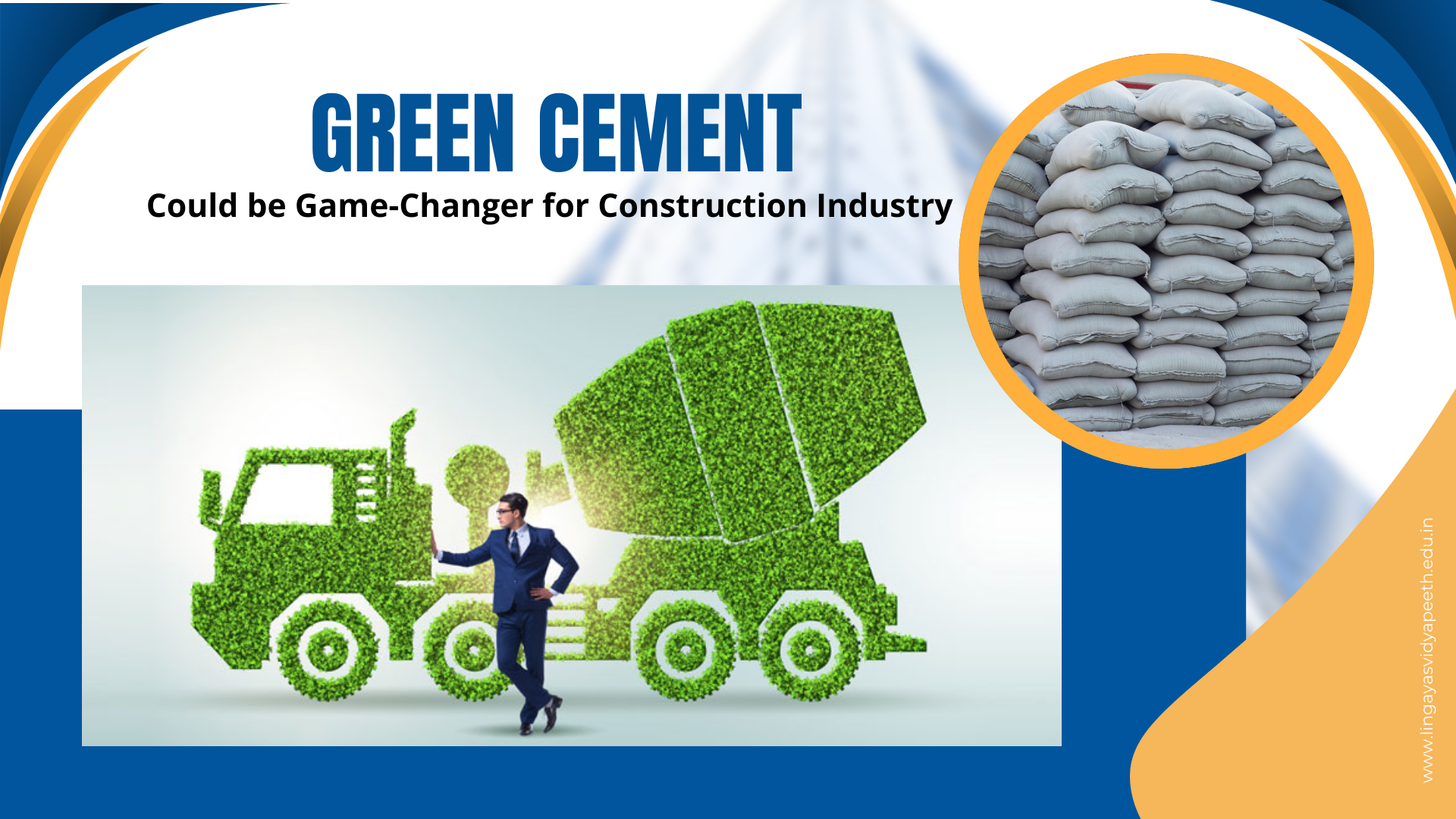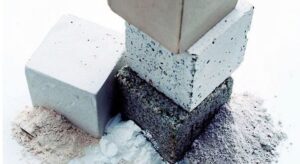Home » Green Cement Could be Game-Changer for Construction Industry?

In the pursuit of sustainable development, the construction industry faces the imperative to adopt eco-friendly materials and practices. Green concrete emerges as a promising solution, offering a more sustainable alternative to traditional concrete while addressing environmental concerns such as carbon emissions and resource depletion.
“Green Concrete/Cement has the Potential to be a Game Changer in Construction Industry”
Green concrete, also known as sustainable or eco-friendly concrete, is a type of concrete that incorporates recycled materials, alternative binders, and innovative manufacturing techniques to reduce its environmental impact. Unlike conventional concrete, which relies heavily on Portland cement- a primary source of carbon emissions, green concrete seeks to minimize carbon footprint, energy consumption, and resource depletion throughout its lifecycle.
Factors Affecting Strength of Concrete

Seismic Reliability Protect Critical Structures
Conclusion:
Green concrete represents a sustainable and innovative solution to the environmental challenges facing the construction industry. By incorporating recycled materials, alternative binders, and energy-efficient production techniques, green concrete offers a path towards reducing carbon emissions, conserving natural resources, and enhancing the resilience and performance of built environments.
As awareness grows and technological advancements continue, green concrete holds the promise of transforming the way we build and pave the way to a more sustainable future for generations to come.
Choose Best B.Tech & M.Tech Civil Engineering College In Faridabad for a promising career in the civil industry. Lingaya’s Vidyapeeth for pursuing M.Tech. in Civil Engineering for an unparalleled academic experience. Benefit from expert faculty, state-of-the-art facilities, and industry-relevant curriculum. Our emphasis on research, practical skills, and industry connections equips you for success in the dynamic field of civil engineering.
From
Dr. Divyashree
Associate Professor & Head
Department of Civil Engineering
Lingaya’s Vidyapeeth
Top Civil Engineering Colleges in Faridabad
RECENT POSTS
CATEGORIES
TAGS
Agriculture Agriculture future AI Architecture artificial intelligence BA English BA Psychology BTech CSE BTech Engineering Business management career Career-Specific Education career guide Career Opportunities career option career scope Civil engineering commerce and management Computer Science Computer science engineering Data science degree education Engineering Engineering students English Literature english program Exam tips Fashion Design Fashion design course Higher Education Journalism journalism and mass communication law Law career Machine Learning MA Psychology Master degree mathematics MBA Mechanical Engineering Pharmacy Psychology Research and Development students
University Address: Nachauli, Jasana Road, Faridabad, Haryana
Toll Free: 1800-120-4613
Mobile : 8447744303 | 8447744304 | 8447744306 | 8447744309
Address: C-72, Second Floor, Shivalik, Near Malviya Nagar,
Above HDFC Bank, New Delhi 110017
Ph.No. - 011-46570515 / 45138169 / 41755703 / +91-7303152412
Jagmani Kutir, Ground Floor, Road No-1, Rajeev Nagar,
Near Darbar Marriage Hall, Patna-800024, Bihar
Contact No: 9818352069/8130120095
Mail: [email protected]
Copyrights © 1998 - 2025 Lingaya's Vidyapeeth (Deemed To Be University). All rights reserved.
It is important to note that the following email IDs and domains are fraudulent and do not belong to our university.
LV only conducts physical/online verification of any document related to examination on the following email id: